The Feast of Tabernacles
The Temple of God had been completed. More than 150,000 men had labored for seven years in the building of what became known as Solomon’s Temple. The finest wood, the purest gold and silver, and the best materials had gone into the construction of this house of worship.
At the dedication of the structure, the place where the shekinah glory of God would reside, “all the men of Israel assembled themselves before King Solomon at the feast” (1 Ki. 8:2). How significant that when God came to dwell with man in His Temple, it was inaugurated at the Feast of Sukkot (Tabernacles), the festival that speaks of dwelling.
THE PAST
The Biblical Command
This festival is known by many names: the Feast of Ingathering (Lev. 23:39), the Feast of Tabernacles (Lev. 23:34), and the Feast of Sukkot (1 Ki. 8:2). It was celebrated in the Hebrew month of Tishri (September/October). So preeminent was this festival in biblical times that when the people mentioned “the feast,” it was understood to be the Feast of Tabernacles.
It was incumbent upon all the males of Israel to appear before the Lord three times each year—at the Feast of Passover, the Feast of Weeks (Shavuot or Pentecost), and the Feast of Tabernacles (Dt. 16:16), and everyone was required to bring an offering before the Lord.
During Passover and Weeks, it was often difficult for Jewish farmers from distant lands to leave their homes and journey to Jerusalem. Their crops still needed to be tended, and the cutting and threshing of grain were still in progress. The Feast of Tabernacles, however, took place after the fall harvest was gathered. The families who could not make the trip during the spring festivals traveled to Jerusalem at the Feast of Tabernacles to present their offerings before the Lord at the Temple.
Dwell in Booths
To celebrate this festival, God commanded the Israelites to dwell in booths for seven days. In this way, they would remember through the ages that God made their ancestors dwell in booths after the exodus from Egypt (Lev. 23:41–43).
The command to dwell in booths during this festival also had other purposes. It has been suggested by some rabbis that the booths are a reminder of the heavenly clouds that surrounded Israel in the desert, protecting them during their journey. The dwelling in booths is also understood to be a reminder to the people that they must look to God for their sustenance. The temporary nature of the structures, not completely closed to the elements, reminds the inhabitants that God is the only true source of security and peace.
The Four Species
In celebrating the festival, the Israelites were commanded to take what have become known as the Four Species: “ye shall take on the first day the boughs of goodly trees, branches of palm trees, and the boughs of thick trees, and willows of the brook” (Lev. 23:40).
The identification of these species has become a matter of tradition. The Word of God is silent (except for the palm and willow) on what species of trees are actually required. The following have become the accepted items for each of the commands:
- Etrog (“boughs of goodly trees”)—a member of the citrus family. It has a sweet fragrance and taste.
- Lulav (“branches of palm trees”)—a palm frond. Branches of a palm tree with long leaves lying one upon the other are used. The leaves converge to a point.
- Hadas (“boughs of thick trees”)—myrtle twigs entirely covered by leaves growing out, three at a time, from the same level on the stem.
- Aravah (“willows of the brook”)—twigs of a willow tree with long leaves having smooth or finely serrated edges on red stems.
The people celebrated this festival with rejoicing. The branches were waved before God as the people rejoiced in His goodness. The Etrog was separated from the latter three. The conjunction “and” between the last three items resulted in their being tied together. Coupled with the Etrog, they were waved before God in rejoicing.
The Succah (booth) and the Four Species remind the worshiper of the festival. The Succah speaks of the historical truth of God’s provision, and the Four Species are a reminder of the agricultural basis of this festival.
Libation of Water
During the days of the Temple, a ritual was introduced that has no roots in the Bible. It was common during the offering of sacrifices to offer a libation of wine with the sacrifice. It became a custom, during the seven days of the Feast of Tabernacles, to offer a libation of water also. This was done in the morning after the regular morning sacrifice.
A priest went down to the Pool of Siloam and, in an elaborate ceremony, withdrew some water into a large gold pitcher. He then returned to the Temple to the accompanying sound of silver trumpets, shouts of joy from the crowds gathered around, and the chanting of the other priests: “with joy shall ye draw water out of the wells of salvation” (Isa. 12:3).
The priest with the golden pitcher of water then ascended to the altar, above which were two containers made of silver—one for water and the other for wine. Together with the wine libation, the liquids were poured into their respective bowls. Each then flowed into tubes and mingled together on the altar, ultimately being deposited in an underground passage beneath the altar.
After the libation, the priests, who had procured palm and willow branches, marched around the altar. The Levites stood in choir formation and sang the Psalms of Praise. When they came to the words “We beseech Thee, O Lord, save now! We beseech Thee, O Lord, make us now to prosper!” everyone present raised the palm and willow branches in the air and joined the Levites in reciting those words.
The Torah Dance
The evening brought the most joyous part of the festival, the ceremony called “the festivity of the water drawing.” It was said that “He who has not witnessed it has not seen what real festivity is.”
The Court of the Women was crowded with people, and special galleries were built above the courtyard for the women, while the men assembled below in the courtyard. In the center of the court were four golden menorot built on bases fifty yards high. Each menorah had four branches terminating in huge cups into which oil was poured. The wicks were made from the worn-out garments of the priests. Throughout the night, the cups were kept full, and the light of these menorot was so intense that it is said to have illuminated all of Jerusalem.
During the night, the men carried lit torches and danced while waving the torches, throwing them into the air, and catching them. Songs were sung and instruments played, and the festivities continued into the morning hours. In the morning after the sacrifice was offered, a priest made his way to the Pool of Siloam for the water libation.
What an awesome, joyous spectacle that celebration must have been. No wonder Tabernacles is known as the merriest of the yearly festivals.
The Festival Ends
On the seventh day, the priests marched around the altar seven times, instead of once. Also on this day they beat the ground with their willow branches. This last day is referred to as Hoshana Raba (the Great Day of the Call for Help). There are many interpretations of this important last day. It is believed by many to be the last day of judgment that started with the Feast of Trumpets. Others see it as the dose of the judgment of the world.
Numbers 29:35 speaks of the concluding eighth day of this feast, known as Sh’mini Atzeret. Although technically a separate holiday, it is commonly linked with Tabernacles. None of the symbols of Tabernacles are present on this day, the understanding of which, in Jewish writings, is linked with the future promises of God to Israel. Later we shall look briefly at these promises.
Until the time of the Second Temple, the Feast of Tabernacles was the greatest festival of the year. Passover became the greatest festival during the time of the Second Temple, but Tabernacles has remained the most joyful and the merriest, with its customs, ceremonies, dances, and songs.
THE PRESENT
With the destruction of the Temple almost two millennia ago, the observance of Tabernacles has centered on the local synagogue. The building of a Succah is still mandatory for each individual. It has become a widespread custom to build a Succah next to the synagogue, so that all the worshipers can use it and fulfill the commandment. Some Jewish people still construct Succahs in their own yards, but many cannot because of restrictions placed upon them by their communities.
Care is taken to construct the Succah according to Jewish law. Some meals are eaten in the Succah during the festival to fulfill the commandment to “dwell” in the Succah.
The Four Species still play an important part in today’s celebration. The Lulav is waved in the synagogue during the reciting of certain passages from the Hallel (Ps. 113–118). It is also customary to have the religious procession; however, instead of marching around the altar, as in the Temple, the congregants march around a Torah scroll that has been placed on the bimah. In orthodox synagogues, the bimah is a platform in the center of the synagogue. On the seventh day, the congregants march around the bimah seven times and beat the floor with willow branches.
The big change in today’s celebration is in the emphasis of the festival, which now centers on the Torah A ninth day has been added, known as Simchah Torah (Rejoicing over the Law). On this day, the yearly cycle of reading the five books of Moses (the Torah) is ended and begun anew.
THE FUTURE
Rabbinical Teaching
Numbers 29:12–34 relates that a total of 70 oxen were sacrificed during the festival. On the first day, 13 were offered; on the second day, 12; and so forth until seven were offered on the seventh and last day.
The rabbis understand the number 70 to represent the nations of the world. They suggest that the diminishing number of oxen offered refers to the diminishing influence of the nations of the world as history winds down to the last days and the Messianic era.
The offering of these 70 oxen was for the benefit of the nations of the world. It ultimately looked toward their conversion to the God of Israel and their gathering under the shekinah glory of God.
The rabbis also interpret the Succah as a reminder that the suffering in the wilderness was only temporary. It reminds the people of God’s promise that redemption will come, along with the rebuilding of the Temple.
A passage in the Midrash says, “The Messiah will teach six mitzvot [commandments] to the nations of the world, among these the Succah and Lulav.” The Succah is seen as a picture of national independence and the Lulav a picture that Israel is free of the charges brought against her by the nations of the world. Thus, in the kingdom of the Messiah, Israel will be the head of the nations, and anti-Semitism will no longer exist.
Biblical Teaching
The Bible teaches a future role for the Feast of Tabernacles in the plan of God. Zechariah 12–14 tells of the final, climactic battle of the nations of the world against the nation of Israel. All the people of the earth will come against Jerusalem in battle. Zechariah 12:8–10 teaches that the Lord, the Messiah, will come and save Israel from destruction at the hands of the nations of the world. At that time Israel will recognize her Messiah when “they shall look upon me whom they have pierced.” At that time, Jesus will be proclaimed “king over all the earth” (Zech. 14:9).
In Zechariah 14:16–19, it is recorded four times that the nations of the world will then be required to go up to Jerusalem to keep the Feast of Tabernacles. God will withhold rain from the nations that do not go and will send a plague upon the people of Egypt if they fail to keep the feast.
The Feast of Tabernacles speaks prophetically of the final ingathering of Israel, as well as the nations of the world. God, in the person of the Messiah Jesus, will dwell with the people in Jerusalem.
Jesus and the Feast of Tabernacles
John 7:2 says that “the Jews’ feast of tabernacles was at hand.” Jesus sent His disciples ahead to the feast and shortly thereafter followed them to Jerusalem. The people’s opinions concerning Him were divided. They didn’t know what to make of this man Jesus. Some thought He was good; others thought He was a deceiver. The people searched for Him at the feast to get some answers.
In the midst of the festival, Jesus went into the Temple and taught, but His teachings further divided the people. Many believed He was the promised Messiah (Jn. 7:31), but some thought he had a demon (Jn. 7:20).
On the last day of the feast (Hoshana Raba), Jesus stood up and proclaimed, “If any man thirst, let him come unto me, and drink. He that believeth on me, as the scripture hath said, out of his heart shall flow rivers of living water” (Jn. 7:37–38). The effect of that statement must have been momentarily paralyzing. A priest had already been to the Pool of Siloam with a golden pitcher to get water for the libation. The priests had chanted Isaiah 12:3, “with joy shall ye draw water out of the wells of salvation.” After the water had been poured into the silver bowls, the Levites had sung, in the presence of the entire congregation, “We beseech Thee, O Lord, save now! We beseech Thee, O Lord, make us now to prosper!”
It was probably during a momentary silence in the midst of this joyous procession and song that Jesus made His statement. It was an irrefutable claim of His Messiahship. It produced a further division among the people. Many realized that He had to be the Messiah (Jn. 7:40), but others were not sure (vv. 41–42) or vehemently denied it (vv. 47–49).
Probably on the next day, Jesus again used the background of the Feast of Tabernacles to drive home another truth. The city of Jerusalem had been lit by the four huge menorot for the entire feast. The brightness in the city must have been overwhelming at times. The menorot were darkened as Jesus taught in the Temple (Jn. 8:20), but they stood as a vivid object lesson when Jesus proclaimed, “I am the light of the world; he that followeth me shall not walk in darkness, but shall have the light of life” (in. 8:12).
Two of the most prominent aspects of the Feast of Tabernacles during the time of the Temple were light and water. Jesus used them to teach foundational truths: He alone is the one who can illuminate man’s spirit, and He alone can bring us from darkness into light. He is the only one who can quench man’s thirst. Power, sex, money, religion, and myriad other things can never quench the eternal thirst of the soul.
The Feast of Tabernacles stands as a reminder of God’s provision. Jesus used this feast to speak to man’s greatest need—forgiveness of sin—and the provision of God for that need—Himself, the Messiah of Israel.
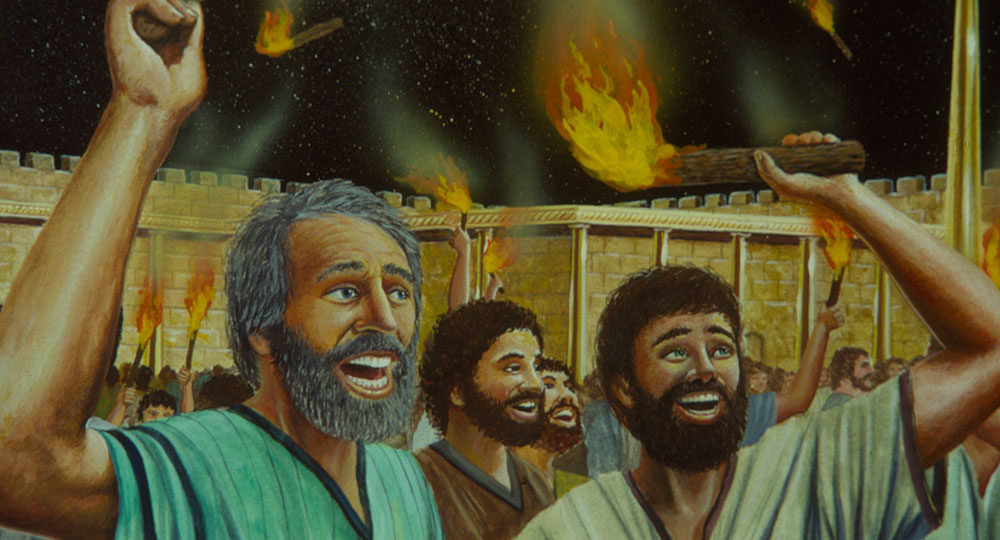

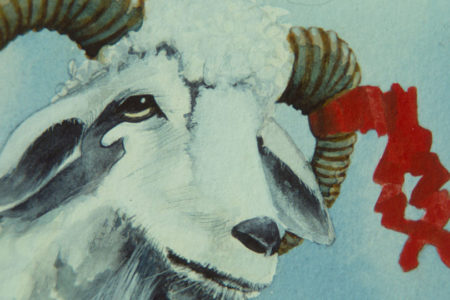
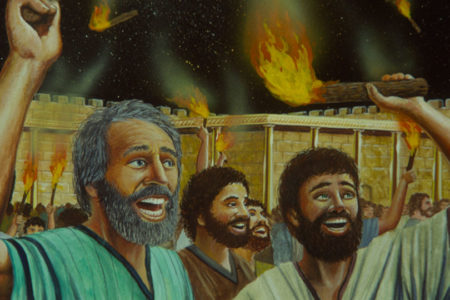
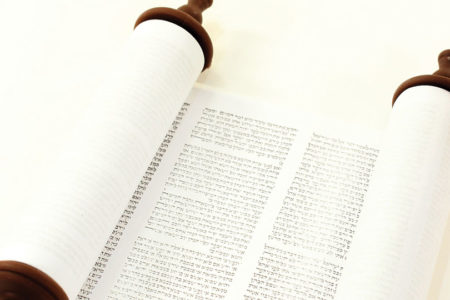
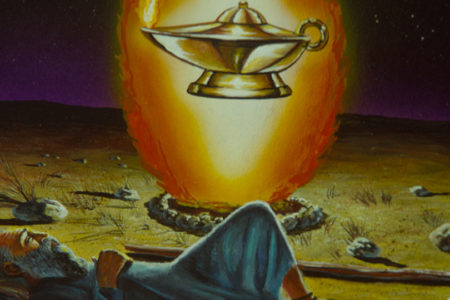



This is very informative and interesting materials would love to see more sabbath shalom ☝️
Thank you for this information on the Feast of Tabernacles. I am seeking Yeshuah in my understanding of the feasts. Susan Kenerson